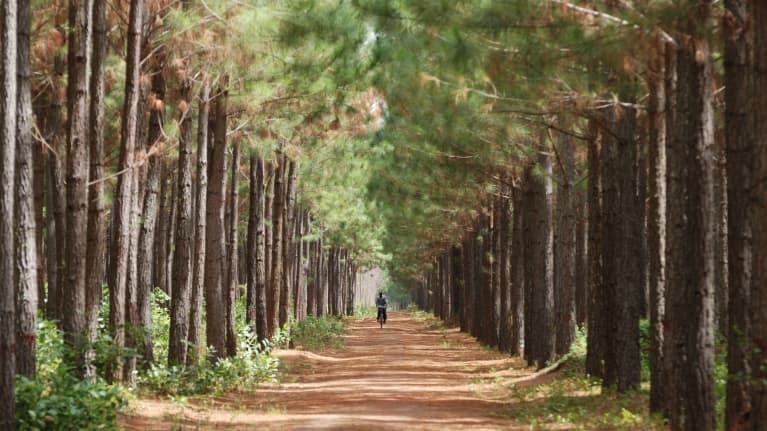“We used to grow rice where the forest is. Now we’ve been driven away. We have nowhere to grow our crops,” says Josephine Ateng.
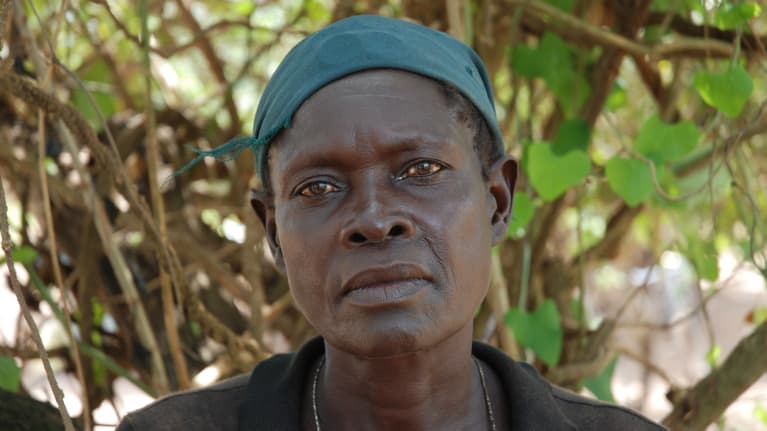
“When they started to plant trees in the area, we had houses there. Those homes were destroyed,” says Moses Olungu.
Indeed, crops and cattle were removed when planting began for a Nordic climate project in the Kachung region of Uganda about a decade ago. Locals say some homes were also dismantled. According to civil society organisations, some 6,000 people have suffered as a result of the forest project. Some have even jailed, clubbed and threatened with weapons.
Western countries outsource emission cuts to developing nations
Western countries have various ways of meeting the climate targets set for them in international treaties – besides cutting emissions in their own countries. They can replace some of their own emission reduction by paying for projects that lower emissions in developing countries.
The roots of this Ugandan forest extend to the Nordic region. The Swedish energy agency compensates for some of the country’s own emissions by buying Certified Emission Reduction (CER) units, also known as carbon credits, which are generated as the Ugandan forest grows. The practical work on the 25-square-kilometre pine plantation is carried out by the Norway-based firm Green Resources company and its subcontractors. Finland has committed to invest and lend the company 10 million euros in development cooperation money via the state-owned development finance company Finnfund.
This is what’s known as clean development mechanism (CDM). The clean refers to binding greenhouse gases, while the development means improving living conditions for local populations. The mechanism is the system whereby emissions produced by Western countries are kept out of the atmosphere by measures in developing countries. Therefore the growth of the forest in Kachung is carefully measured as a basis for calculating the volume of emissions compensated for by the trees.
It’s a zero-sum game. The Swedes can avoid cuts in greenhouse gases emissions at home in relation to the amount of pollution soaked up by the Ugandan woods. In terms of the global climate, the net effect is apparently the same as if the reductions were made in Sweden and the forest had not been planted.
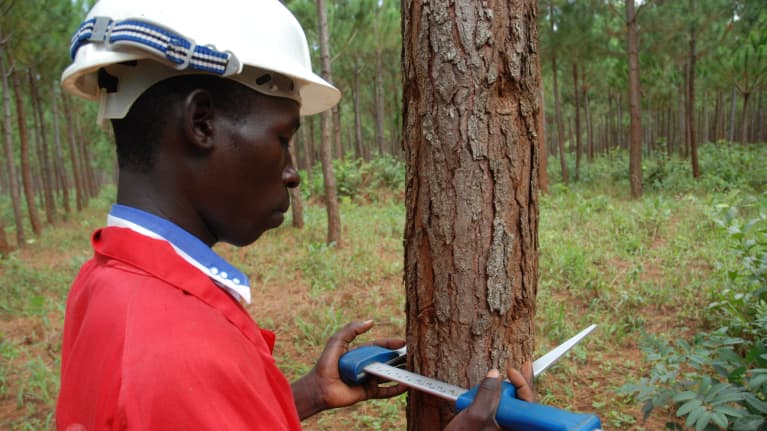
Forest brings improvements and problems
The development of living conditions in the area is much more difficult to measure. There has been progress on some issues. For instance, area residents have been taught how to make stoves that burn less wood and create less smoke, and this skill is being passed on through the local population. Wells have been improved, and two new child-care centres have been built. Many villagers are now employed by the forestry company.
Maxwell Oninje, who is around 50, worked for the firm in the past but now tends his own small forest, grown with seedlings from the company. But things have gone downhill with his cattle. Cows have died, which Oninje attributes to toxic weed-killers used by the corporation.
“They usually use chemicals to spray the weeds. If you take animals there, they eat the plants and then they die,” he tells Yle.
As Oninje sees it, the forest has had a fifty-fifty impact: “I can’t say whether it’s more good or bad.”

Who has the right to use the land?
The villagers used the land for farming, grazing and living for decades before the forest project. The area belongs to the Ugandan state, though, which earmarked it for forestation decades ago. The company, which leased the land about 10 years ago, insists it has acted legally.
“I don't think we took anyone's land. We had a permit for our work in the forest area,” says Teddy Nsamba, environmental, social and governance director at Green Resources.
Finnfund agrees that the situation has been problematic, but insists things are improving.
Under Ugandan law, people cannot be evicted from land if they have lived there for at least 12 years.
“Over the course of 20 or 30 years, people took the area as their own, farmed it and settled there. The government should have evicted them, but it didn't,” says Oba Twoonto, a lawyer defending the villagers.
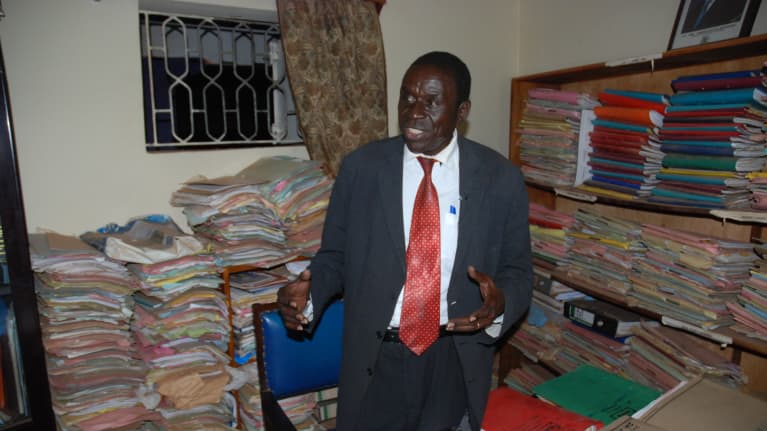
The villagers have joined forces, with 300 of them pursuing legal action over the past decade, demanding compensation for the loss of land use. Their lawyers say they would be satisfied with a settlement of less than half a million euros. However Twoonto is uncertain of a ruling from the corruption-plagued local legal system, and is calling on those funding the project to pay some compensation.
Following a documentary by Sweden's TV4 in late 2015, the Swedish Energy Agency suspended the buying of CER units and ordered the forestry company to make improvements in the villagers' lives.
According to the Finnfund website, the lands used for the forestation project were leased from local communities. After the publication of Yle's report on Tuesday, it changed the text to say that the land is leased from the Ugandan state.
Finnfund however dismisses the locals' accounts of having lived in the area where the forest was planted, and of homes being destroyed. It cites research by a Swedish agricultural university which was unable to find anyone who had lived in the area.

Grazing rights vs. bureaucracy
Villagers are no longer allowed to live or farm in the forest area. According to the company's own calculations, though, grazing should again be possible now that the trees are fully grown.
“Grazing in forest areas is illegal. Changing that would require a decision by Parliament. If grazing was allowed here, it would also affect all forest conservation areas in Uganda,” says Nsamba of Green Resources.
If the company were to permit cattle grazing in the woodland, the emission reductions would have to be recalculated.
“During the dry season, cows have been allowed to pass through the forest and to drink in the marsh area,” says Nsamba.
Jimi Mark Obel, an upper comprehensive school student who has taken cows into the marshland, tells a different story.
“During the dry season they don't usually let us go into the forest because they're afraid of forest fires. They let us in during the rainy season," he says.
“We didn't have anywhere to farm or graze our cows. Now they let us take animals into the forest,” Olungu says. He says that changed after the journalists from Sweden's TV4 visited in late 2015.
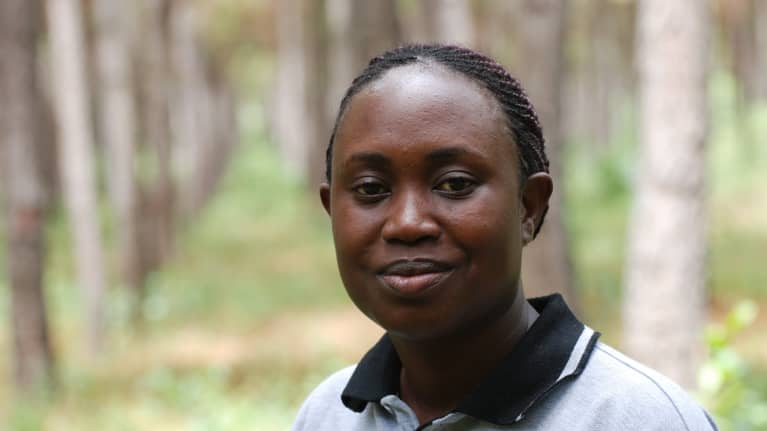
Off the record, Yle journalists who visited in late 2016 were told that some locals may not dare to tell the truth, as they are frightened of the forestry company. On the other hand, some villagers may be tempted to exaggerate because of unresolved claims for damages.
The next step is due this January, when Swedish Energy Agency consultants will try to determine whether the locals’ living conditions have improved sufficiently for the purchase of carbon credits to resume. The villagers agree that small improvements are insufficient as long as the broader land use questions remain open.
“I want a piece of land to replace that which our community lost," says Josephine Ateng.
“I keep thinking that our community has suffered. The government should compensate us for it,” says Moses Olungu.
Finnfund takes a different view of the issue. It says the land disputes “are no longer generally seen as a current problem,” although “there are still individuals in the community who feel that they have lost opportunities for farming and grazing,” says Finnfund’s managing director, Jaakko Kangasniemi by email.
Finland invests millions with little return
The Ugandan story is not unique. Worldwide the CDM mechanism has resulted in uneven results. Finland has spent to 70 million euros on emission reduction units since 2013 via CDM projects in China, Jordan, Honduras and elsewhere. These have proved to be difficult to execute, monitor and manage, partly because of changing CDM rules. Meanwhile the EU's internal emission allowances have fallen so far in value that the system no longer works. Finland is gradually pulling out of CDM ventures.
“The experiences we've had with bilateral projects indicate that the state should not readily join in these kinds of exercises, but that it would be easier to take advantage of various kinds of funds or other ways of buying emissions allowances," says Juhani Tirkkonen, a ministerial adviser at the Ministry of Economic Affairs and Employment, which coordinates the project.
A well-meaning idea for combating climate change and improving living conditions in developing countries has – in Uganda at least – stumbled over poor execution.
“We're talking about climate change, which does not just affect Uganda, but everyone. We have to work together because we need an entire ecosystem with everyone doing their own part. If the forest sector doesn't do its own part, we won't have our input in fending off climate change, which is happening all the time,” says Nsamba of Green Resources.
